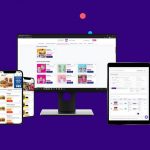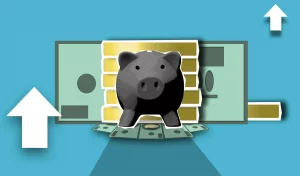All thanks to the quick commerce enablement factor, restaurant management system features have made tremendous progress over the last few years. As of the most recent statistics, the National Restaurant Association reported an aggregated revenue of $829 billion in sales. Meanwhile, over 1 million worldwide restaurants have up to 15.6 million active and off-site employees responsible for making food deliveries, handling customer queries, and fulfilling all kinds of orders.
However, for startups, it’s a completely different game. Since many new restaurant owners are oblivious to the full breadth of restaurant management system features to look for, chances are they either sign up for a vendor account that doesn’t fulfill their business requirements in the long run, or it’s too expensive to keep up with.
In that order, we have listed down the most essential restaurant management system features that you need to ensure scalability and long-term success.
Let’s see what it’s all about.
[INSERT_ELEMENTOR id=”2061″]
Top 8 Restaurant Management System Features Recommended to New Food Business Operators
1. On-Demand Sales Tracking
Whether they are credit card transactions or payments made via multiple modes, a robust sales tracking feature serves as a backbone to any online thriving restaurant business. Ideally, even if you have signed up for an entry-level plan with a direct food ordering processor, your restaurant management system features should overlook a sales tracking hub. It will make it easier and efficient for you to keep tabs on business sales data with unparalleled precision.
Furthermore, each sales number helps to highlight the associated food order menu item sold, the number of units sold, and the all-time highest vs lowest-selling item. You can tweak your restaurant menu, add incentives to tantalize customers with new deals to engage more customers during your low selling days.
2. Efficient Back End Menu Manager + Items Creator
An efficient menu creation tool is one of the high-demand restaurant management system features which help food operators to create their menu. Ideally, for any restaurant management system, you should be able to create a menu in 10 – 20 minutes with all the essential items that will replace the front-end food order app’s placeholder grids.
Before you decide on a particular system, evaluate it on a trial plan. Also, don’t hesitate to contact vendor support to help you with basic technical issues. All in all, a dynamic flexible system for creating food order menus is great for reducing effort on non-tech savvy restaurant owners’ part.
3. Multiple Payments Processing
Credit cards aren’t the only mode of payment for online restaurant customers.
According to the TSYS Consumer Data payment study, 68% of the customers choose to make payments either through credit cards or debit cards. Meanwhile, 18% of the respondents preferred to pay with cash when visiting a dine-in restaurant facility, or if the food was ordered via ‘Cash on Delivery Mode’, using an online food order app.
On top of all that, the modern-day quick commerce enablement factor has allowed online restaurants to integrate QR Code payments, redeem codes, and social commerce in-store payment processing to facilitate customers. For an ideal restaurant management system, you’d want a solid payment processing tool, or toolset to meet the average customer’s demands.
Also, POS system compliance standards highlight the use of EMV to protect customers’ data. Unfortunately, not all types of restaurant management system features support EMV credit card payments. If you are looking to sign up for a POS system, or an account with an online food services aggregator, ensure that they have smart card payment support, alongside other features that we mentioned earlier.
[INSERT_ELEMENTOR id=”2061″]
4. Outstanding Technical and General Level Customer Support
For every successful restaurant, customer support at the general and technical levels plays a vital role in the business’s success. Although this level of support isn’t exactly what you’d call a feature-centric highlight of a restaurant management system, it feels good to know that the company that you’re about to sign a contract with, really cares about your business.
Technical issues are part of the business operation. No matter which type of system you are using, you are bound to run into issues that only the support team can resolve. Therefore, please ensure that the food services provider has a hyper-active support channel, available 24/7.
The real hurt comes when systems are running smoothly and during your high-performing days, something goes down. By the time you are able to get in touch with someone from the support department, you have already lost a good chunk of customers. Determine your food business’s support expectations before purchasing any POS software, restaurant management system, or any SaaS service for the business.
5. Integrated Marketing Tools, Discount Codes & More
Integrated marketing channels support and general level marketing focused tools are another highlight of restaurant management system features to look out for.
At Blink, we have an SMS marketing plan, alongside a discount code creator system to help you promote your food business as per your feasibility, and business requirements. Other than that, the system is equipped with a unified ordering model, customer analytics data + Microsoft Power Bi integration, and various other feature sets that help food businesses to fully embrace the quick commerce factor.
On top of it all, if you were to consider the customer data analytics feature, it gives a full-scale view of sales numbers, customers buying patterns, highest selling food order items, and much more. You can also identify which particular items sold low, and performed comparatively better when combined with highly popular dishes.
Such features are essential to improvising and adjusting your overall sales and monetization strategies in the long run. If you were to fall back on data-driven metrics, you can avoid repeating mistakes throughout the tenure of your online restaurant business.
[INSERT_ELEMENTOR id=”2061″]
6. E-Wallet System
Although multiple payment processing support is great from day-to-day transactions point of view, many restaurant management system features are lined up with the ability to offer refunds to customers through a dedicated E-Wallet system.
For instance, if a general item order or an online food order couldn’t be fulfilled due to delivery issues on the rider’s part, or unavailability of stock items in the inventory, the customers are compensated through a virtual currency amount that’s applied automatically through the back end.
In some cases, vendors have to send a manual notification to the direct food ordering partner for E-Wallet feature enablement, or individual refund requests on behalf of customers. Regardless, such features are a great way of invoking a sense of security among customers.
In case an order fulfillment request goes awry, customers can shop again next time with confidence. Knowing that they wouldn’t have to repay the vendor because the billable amount can be deducted from the customer’s E-Wallet credit is a great way of increasing customer loyalty.
All in all, E-wallets are effective for converting existing and first-time customers into loyal assets.
7. Inventory Management System
Inventory management is a standalone feature that many restaurant management systems fail to offer. It’s simple, but an effective way of keeping tabs on your existing food stock, vs. the number of items readily available to be ordered.
Right now, many POS software have the option to help vendors deduct items from their inventory whenever something goes on sale. For instance, if you are selling a highly popular burger deal or a steak plate, the inventory management system can be configured to reflect the real-time deduction of food orders that are currently in processing mode.
Furthermore, you can deduct the size of your online food dishes by different proportions. For instance, reducing the size of a 10 oz regular salad dish by 5 Oz shouldn’t be a big issue – i.e. as long as the restaurant management system is capable of such a personalization effect.
8. In Product SMS & App Marketing Tools
Blink increases business outreach factor by offering different in-app and back-end marketing tools to its partners.
SMS marketing is integrated into the back-end dashboard where vendors can sign up for the XYZ amount of SMS messages quota to help them double down on sending messages directly to customers’ cell phones. Not only are these packages highly feasible, but they also invoke confidence in vendors as they can scale their marketing campaigns without having to sign up on other platforms for the same purpose.
[INSERT_ELEMENTOR id=”2061″]
Conclusion
Combining the features mentioned in this post, you can expect the type of standard you need to look for when signing up for a hyper-efficient restaurant management system.
At Blink, we strive to highlight the overall effectiveness of modern-day restaurant management systems. Lucky for you, we have set up a demo portal where you can see how our restaurant portal works to your business’s full advantage.
For more details, don’t hesitate to visit the Blink for Restaurants page, or contact our sales rep to walk you through the entire restaurant management system process.
[INSERT_ELEMENTOR id=”2061″]
Related Articles:
 5 Important Restaurant App Features You Need To Scale Your Food Business
5 Important Restaurant App Features You Need To Scale Your Food Business
 Restaurant Email Marketing Strategies to Win More Customers
Restaurant Email Marketing Strategies to Win More Customers
 Digital Marketing For Restaurants; 8 Effective Strategies
Digital Marketing For Restaurants; 8 Effective Strategies
 Tips for Optimizing Your Restaurant Website
Tips for Optimizing Your Restaurant Website
 38 Restaurant Survey Questions to Help You Gain Valuable Insight in Saudi Arabia
38 Restaurant Survey Questions to Help You Gain Valuable Insight in Saudi Arabia








